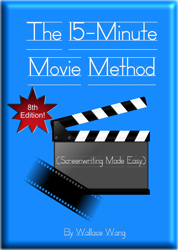There’s a huge difference between a great movie and a bad movie. In a bad movie (“Argylle”, “The 355”, “Madame Web”) scenes feel completely separate and isolated from one another. What happens in one scene has no relevance to what happens in a later scene. This creates an effect like a car starting over and over.
It’s far better to connect scenes together by planting setups in early scenes that payoff somehow in a later scene. This makes both sets of scenes feel integrated into a whole story so every scene feels necessary. One of the best movies to study for setups is “Back to the Future.” Watch the following short scene early in the movie.
Just in this single short collection of scenes, we get the following setups:
- Doc’s clocks are 25 minutes late because of his experiment, hinting at time travel
- There’s a case of plutonium under Doc’s bed
- Marty travels on a skateboard by hitching a ride on the back of moving vehicles
- Posters urge re-electing a black man named Mayor Goldie Wilson
- Principal Strickland catches Marty late for school and warns him that in the history of Hill Valley, no McFly has ever amounted to anything, to which Marty replies, “Well history is going to change,” hinting at the ending
- Marty auditions to play guitar at his school dance
- Marty doubts himself and feels he can’t take rejection (like his father)
- Marty sees a 4×4 truck that he wishes he had
- A woman explains that lightning hit the clock tower 30 years ago and hands Marty a flyer about the clock tower getting struck by lightning
Notice all the major and minor setups in this simple 6:35 minute scene. That’s what your early scenes must strive for. Pack in so much exposition seamlessly that we aren’t even aware of the significance of so many seemingly trivial details until later in the story.
In this “Back to the Future” scene, the minor setups are the joke about Mayor Goldie Wilson and the 4×4 truck Marty wishes he had (which he gets in the end). The major setups are
- Doc’s time travel machine, powered by plutonium
- Marty catching rides on the back of vehicles using a skateboard, which foreshadows how he’ll escape from Biff later in 1955
- Marty playing guitar at his parents’ school dance (even though he was rejected from playing at his own school dance)
- Marty doubting himself like his father
- The clock tower lightning strike that will prove instrumental in getting Marty back to 1985
If your early scenes aren’t setting up later scenes in your story, those early scenes must be rewritten drastically. Too many novices write dull early scenes that simply introduce trivial details that are quickly forgotten later in the story, making these early scenes relatively useless.
Always strive to pack as many setups in every early scene as possible. By doing this, you’ll create scenes that feel integrated and create a more focused and believable story from start to finish.
Sign up to take a FREE course about how to write scenes in a screenplay.

